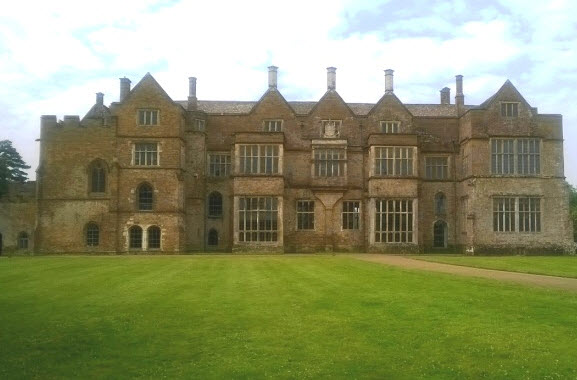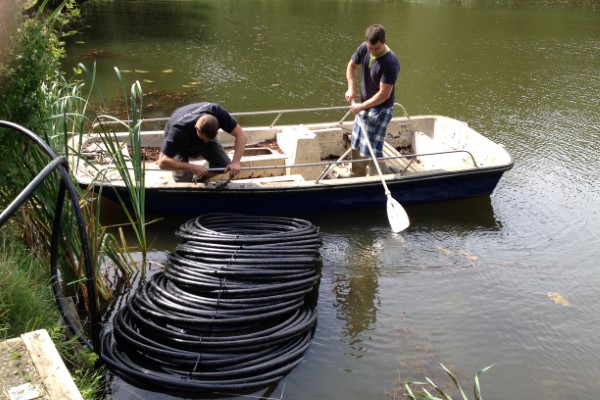Client brief
The owners of a historic castle in Oxfordshire wanted to replace their aging oil-fired heating system with a more sustainable, energy-efficient solution. The brief required a low-carbon system capable of meeting the high heating demands of a large, traditionally built property while maintaining occupant comfort and preserving the historic integrity of the building.
Our solution
Better Planet designed, supplied, installed, and commissioned a renewable heating system using brine-to-water heat pump technology, providing a combined thermal output of 70kW.
Key System Components:
- Heat pumps:
- NIBE F1345 – 30 kW Heat Pump dedicated to domestic hot water and space heating.
- NIBE F1345 – 40 kW Heat Pump for space heating.
- Ground collectors:
- Following a detailed site assessment, we recommended using the property’s brook as the energy collection source rather than installing ground collectors or using the moat. The moving water in the brook ensures a higher average brine temperature, improving heat pump efficiency.
- 11 pond mats with 32mm pipes were installed on the brook’s bed and connected to a nearby 11-port ground manifold.
- Heat was transferred to the castle via 90mm flow and return pipes, routed through the moat.
- Thermal Storage:
- 500-litre heat pump cylinder to meet hot water demand.
- 500-litre buffer tank to ensure stable heating system performance.
We also completed a room-by-room heat loss calculation and advised on necessary radiator upgrades to ensure compatibility with the lower flow temperatures of heat pumps.
Project success
-
Sustainable heating solution: The castle now benefits from a low-carbon heating system that significantly reduces reliance on fossil fuels.
-
Enhanced energy efficiency: Using the brook as a heat source improved heat pump efficiency, ensuring reliable performance even during colder periods
-
Preservation of historic character: The installation was completed with minimal disruption to the historic fabric of the building.
-
Reduced carbon emissions: The transition from oil heating to renewable technology substantially lowered the property’s environmental impact.












